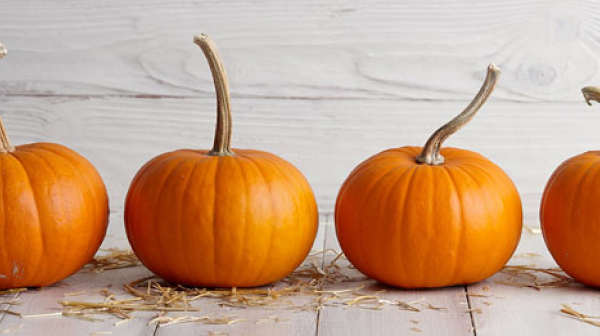
What says “October” more than the sight of a beautiful orange pumpkin?
A central element in many fall festivals, the pumpkin is a beloved symbol of autumn.
Fittingly then, National Pumpkin Day is celebrated every year on Oct. 26, a holiday designed to give thanks to this popular squash native to North America. And, of course, pumpkins have become a symbol inseparable from Oct. 31's Halloween.
So, how much do you know about pumpkins? Test your knowledge below.
10 things you probably didn't know about pumpkins:
• The word “pumpkin” originates from “peopon,” which means “large melon” in Greek. It then evolved to “pompon” in French and “pumpion” in Britain. The Americans later changed it to “pumpkin,” the name we still use today.
• Every year, the US produces 1.5 billion pounds of pumpkin. 80 percent of this crop (around 800 million pumpkins) are ripe for picking in one single month of the year — October.
• Over 45 different varieties of pumpkin exist. They range in color including orange, red, yellow and green, and they boast names like Hooligan, Cotton Candy, and Orange Smoothie.
• Technically a fruit, the pumpkin is a winter squash in the family Cucurbitaceae which includes cucumbers and melons.
• Every single part of a pumpkin is edible: the skin, leaves, flowers, pulp, seeds, and stems.
Interestingly, pumpkins are 92 percent water.
• Naturally low in energy density, pumpkins are an excellent source of potassium, vitamin A and beta-carotene, the powerful antioxidant that gives orange vegetables and fruits their color.
Scientists believe that pumpkins originated in North America about 9000 years ago. The oldest pumpkin seeds have been found in Mexico and date back to somewhere between 7000-5550 B.C..
• Pumpkins (along with other forms of squash) were a historically important food staple among Native Americans. They would grow the squash along river banks next to maize and beans, a planting technique that was called the “Three Sisters Method,” which allowed the three crops to sustain each other. Corn served as the trellis upon which the beans could climb; beans were nourished by the sunlight and kept the corn stalks stable on windy days, while also nourishing their soil; and pumpkins sheltered the corn’s shallow roots and prevented weeds from taking hold.
• The practice of carving Jack-O’-Lanterns was brought to America by Irish immigrants. In their homeland, the Irish used to carve Jack-O’-Lanterns out of potatoes or turnips, but upon arrival in America, they began to use pumpkins instead because they were far easier to carve. The tradition of the “Jack-O’-Lantern” stems from an Irish legend about a man named Stingy Jack who was a somewhat unpleasant character famous for playing tricks on people.
Regardless of how much you know about pumpkins, this much is sure: one of the best ways to enjoy one is to eat one!